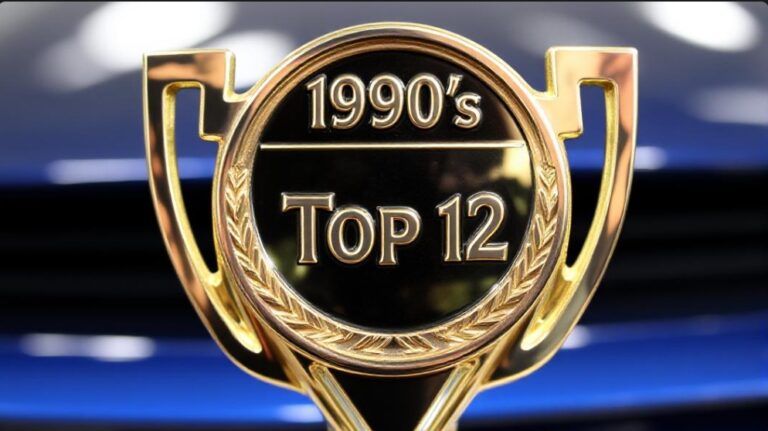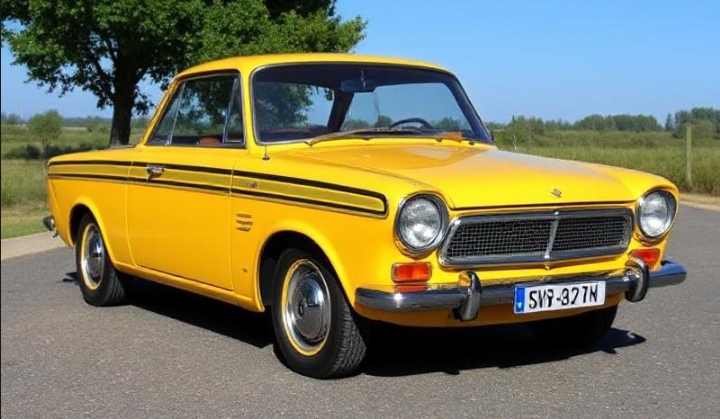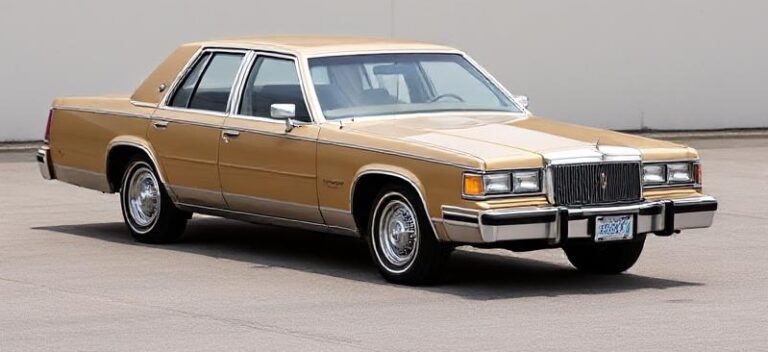Handling by Lotus: The Brief, Brilliant Life of the Isuzu Stylus
In the vibrant and fiercely competitive automotive landscape of the early 1990s, the compact sedan market was a battlefield dominated by titans. The Honda Civic, Toyota Corolla, and Nissan Sentra were the undisputed champions, selling in colossal numbers and defining the segment with their reputations for reliability and efficiency. To compete, a newcomer needed more than just competence; it needed a unique selling proposition, a secret weapon to carve out a niche. For a brief, shining moment, Isuzu had exactly that: the Stylus, a sophisticated and stylish sedan with a chassis tuned by the legendary engineers at Lotus.
The story of the Isuzu Stylus is one of brilliant engineering, curious marketing, and a corporate strategy that ultimately sealed its fate. Sold in the United States for just three model years—1991 through 1993—the Stylus was a hidden gem, a driver-focused machine that offered a European feel in a Japanese package. Its evolution, though short, reflects the changing priorities of its parent company and the enthusiast market it so nearly captured.
Genesis: A Global Platform with a British Touch
The Isuzu Stylus was the four-door sedan variant of the third-generation Isuzu Gemini, a vehicle developed as part of General Motors’ global “R-body” platform initiative. This same platform underpinned its more flamboyant two-door siblings, the Isuzu Impulse and the Geo Storm, which enjoyed more mainstream recognition in the US. While the Storm and Impulse sported aggressive, sporty styling, the Stylus was penned with an understated elegance. Its smooth, rounded lines, flush-mounted glass, and clean, uncluttered design gave it a sophisticated, almost futuristic appearance that stood in stark contrast to the boxier designs of its contemporaries.
What truly set the Stylus apart, however, was the “Handling by Lotus” badge affixed to the B-pillars of its higher trim levels. At the time, General Motors held a controlling stake in Group Lotus, the famed British sports car manufacturer and engineering consultancy. This relationship allowed GM brands, including Isuzu, to tap into Lotus’s unparalleled expertise in suspension and chassis tuning. This was no mere marketing gimmick. Lotus engineers were actively involved in calibrating the spring rates, damper valving, and anti-roll bar specifications for the Stylus, transforming a competent front-wheel-drive chassis into one of the best-handling cars in its class.
.
THIS could come in handy for your auto garage (and everywhere else!):

.
The 1991 Debut: A Three-Tiered Approach
When the Isuzu Stylus launched in the United States for the 1991 model year, it arrived with a clear and distinct model hierarchy, designed to appeal to a wide range of buyers from the economy-minded to the performance enthusiast.
Stylus S (The Sensible Start)
The entry point to the lineup was the Stylus S. This base model was positioned as a stylish and reliable commuter car. Under the hood was a 1.6-liter SOHC (Single Overhead Cam) 12-valve inline-four engine (4XE1), producing a modest but adequate 95 horsepower. It was paired with either a standard 5-speed manual transmission or an optional 4-speed automatic.
The S trim was spartan by today’s standards. It came with 13-inch steel wheels with hubcaps, manual windows and locks, and a basic interior. However, it benefited from the same excellent chassis architecture and clean design as its more expensive siblings. While it lacked the coveted “Handling by Lotus” suspension, its fully independent suspension (MacPherson struts up front, multi-link in the rear) still provided a comfortable and predictable ride, making it a more engaging drive than many of its competitors.
Stylus XS (The Sweet Spot)
The mid-range Stylus XS was the model that truly embodied the car’s spirit and earned it critical acclaim. This is where the magic happened. The XS swapped the base engine for a much more potent 1.6-liter DOHC (Dual Overhead Cam) 16-valve inline-four (4XE1-W). This free-revving and energetic powerplant produced an impressive 130 horsepower, a significant figure for a naturally aspirated 1.6-liter engine at the time.
Crucially, the XS was the first trim to receive the full “Handling by Lotus” treatment. The specially tuned suspension transformed the car’s character. Reviewers of the era praised the XS for its sharp turn-in, excellent body control, and communicative steering. It felt nimble and athletic, encouraging drivers to seek out winding roads. It rode with a firm but supple compliance that felt distinctly European, absorbing bumps without feeling harsh or disconnected.
To complement its enhanced performance, the XS model also included a host of upgrades: 14-inch alloy wheels, a tachometer, upgraded cloth interior, power windows and locks, and often a better sound system. For the enthusiast who needed the practicality of a four-door sedan but craved the soul of a sports car, the 1991 Stylus XS was a revelation.
Stylus RS (The Unicorn)
At the absolute pinnacle of the 1991 lineup sat the Stylus RS, a model so rare it has achieved near-mythical status among Isuzu fans. The RS was a genuine performance sedan, a sort of proto-WRX for the discerning enthusiast. It took the DOHC engine from the XS and added a turbocharger and intercooler, boosting output to a potent 160 horsepower and 150 lb-ft of torque.
But the real party piece was its drivetrain. The Stylus RS came standard with a sophisticated full-time all-wheel-drive (AWD) system, complete with a viscous coupling center differential. This, combined with the “Handling by Lotus” suspension and four-wheel disc brakes, gave the RS incredible all-weather traction and phenomenal grip in the corners. It was a true “giant killer,” capable of surprising much more expensive sports cars. The RS was fully loaded with every available feature and represented Isuzu’s boldest statement in the passenger car market.
1992: Evolution and Retraction
The 1992 model year brought both a step forward in safety and a significant step back in performance. In a progressive move for the segment, a driver-side airbag became standard equipment across the entire Stylus lineup. This was a major safety upgrade that put it ahead of several key competitors.
However, the big news for 1992 was the discontinuation of the range-topping RS model. The turbocharged, all-wheel-drive marvel was gone after just one year of production. The exact reasons are not officially documented, but it was likely due to slow sales, high production costs, and a strategic decision by Isuzu to simplify its offerings. The departure of the RS signaled the beginning of the end for the Stylus as a performance-oriented nameplate.
The S and XS models carried over largely unchanged. The S retained its 95-horsepower 1.6L SOHC engine, while the XS continued with its brilliant 130-horsepower 1.6L DOHC engine and the all-important Lotus-tuned suspension. For 1992, the XS was now the definitive performance version of the Stylus.
1993: The Final Act and a Change of Heart
The 1993 model year would be the last for the Isuzu Stylus in the United States. This final year saw the most significant change to the car’s most celebrated trim level. The high-revving 1.6L DOHC engine in the Stylus XS was replaced by a larger, 1.8-liter SOHC 16-valve inline-four engine.
While the new engine offered a slight increase in torque, its peak horsepower dropped from 130 to 115. This shift fundamentally altered the character of the XS, moving it away from a high-strung, rev-happy sport sedan to a more relaxed, torque-focused cruiser. The “Handling by Lotus” suspension tuning remained, but it was now paired with a less enthusiastic powertrain. This decision was likely made to appeal to a broader, more mainstream audience and to improve fuel economy, but it alienated the very enthusiasts who had championed the car.
The base Stylus S continued with its trusty 1.6L SOHC engine, carrying on as the sensible economy choice until the end. By the close of the 1993 model year, the Isuzu Stylus quietly disappeared from American showrooms.
Legacy and Disappearance
The demise of the Stylus was not a result of it being a poor car; quite the opposite. It was a casualty of a larger corporate shift within Isuzu. The company saw its future not in passenger cars, but in the burgeoning and highly profitable SUV and truck market. With vehicles like the Trooper and the Rodeo (and its Honda Passport twin) selling extremely well, Isuzu made the strategic decision to withdraw entirely from the car market in the United States and focus on its strengths.
Today, the Isuzu Stylus is a rare sight on the road, a forgotten footnote for most. But for a dedicated community of automotive enthusiasts, it remains a cult classic. It represents a time when a mainstream automaker dared to be different, prioritizing driving dynamics and feel over focus-group-driven mediocrity. The 1991 Stylus RS stands as a tantalizing “what if,” a glimpse of a performance legacy that never was. But it is the 1991-1992 Stylus XS that is the car’s true legacy—an affordable, practical, and stylish sedan that could dance through corners with the poise of a European thoroughbred, all thanks to a little bit of magic from the engineers in Hethel, England.







